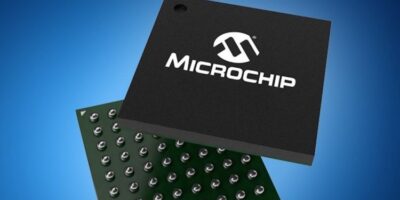 by Reuters
by Reuters
Sector News
Mali image signal processors enhance image quality for drones and security
Arm has released the Mali-C52 and Mali-C32 image signal processors (ISPs). They are claimed to provide class-leading image quality, a complete software package, and full set of calibration and tuning tools and bring a higher image quality to a range of everyday devices including drones, smart home assistants and security, and internet protocol (IP) cameras
Based on Arm Iridix technology, the ISPs apply over 25 processing steps to each pixel, three of which – high-dynamic range (HDR), noise reduction and colour management -deliver key differentiation in terms of image output quality, says Arm.
By incorporating Arm’s market-leading Iridix technology and algorithms for noise and colour management, the Mali-C52 and Mali-C32 ISPs efficiently deliver all three at high resolution and in real-time (e.g. 4k resolution at 60 frames per second).
The company estimates that demand for IoT devices with embedded vision capabilities are among the highest across connected devices. For example, the security (surveillance) and IP camera market is expected to see an annual growth rate of 20 per cent through to 2021, reaching over 500 million shipped units. Personal robots are growing at a year on year rate of 75 per cent, and are expected to reach two million units shipped in 2021. Similarly, the smart home market is growing at 14 per cent year on year, to realise 88 million in 2021, while other devices like drones, augmented reality (AR)/ mixed reality (MR) equipment and action cameras are being widely adopted.
The Arm Mali-C52 and Mali-C32 ISPs both have Arm’s dynamic range management and tone mapping technology, to enable viewers to see enhanced shadows, without touching or changing the highlights of the image.
The Mali-C52 can be configured to optimise image quality or area. Arm’s silicon partners can use the same IP and software across a range of products and use cases. The Mali-C32 is optimised specifically for area in lower-power, cost-sensitive embedded vision devices such as entry-level access control or hobby drones.
Both ISPs are include the hardware IP along with ISP software drivers, including the 3A libraries (auto-exposure, auto-white balance, auto-focus) and the calibration and tuning tools. They feature Iridix technology, designed to deliver a precise model of human retina contrast adaption, enabling cameras to see like the human eye. They can process 600 megapixels per second, which is essentially professional photography quality (e.g. DSLR) at premium smartphone-level frame rates, says Arm.
A software package for controlling the ISP, sensor, auto-white balance, auto-focus and auto-exposure is included. Both bare metal and Linux (Video4Linux framework – v4L2) software are provided.
AI keeps connected vehicles secure with ML and DL
Machine learning (ML) and deep learning (DL) insights are used to provide OEMs and tier-1 suppliers enhanced security and operation efficiency via SafeRide Technologies’ vXRay advanced AI technology for connected vehicles.
Automotive cybersecurity company, SafeRide Technologies, believes it is the first to offer multi-layer deterministic and heuristic anomaly detection and threat prevention technology in the form of vXRay, a behavioural profiling and anomaly detection technology for connected vehicles’ security operation centres (SOC). vXRay can be integrated into connected vehicles’ SOCs independently of vehicle architecture or ECU sourcing. It can help customers uncover vulnerabilities, provide early detection of vehicle malfunctions and flag misuse and abuse problems.
vXRay uses advanced, unsupervised ML paradigms in an autonomous process to establish the vehicle’s normal behaviour without dependencies or previous knowledge of ECU properties and protocols. Once the behavioural baseline is established, the ML models can detect, categorise and flag any abnormal behaviour and report it to the vehicles’ SOC for further analysis.
Vehicle data can be used for anomaly detection, using in-vehicle analysis of signatures and error codes based on partial data, yet use limited computational power, points out SafeRide. Security measures installed in vehicles today can only detect and prevent known attacks, yet cybersecurity threats mean that OEMs need to install intrusion detection capabilities that can detect unknown threats and facilitate remediation. Upgrades with advanced intrusion detection systems can be costly, but the company believes that vXRay technology provides OEMs with immediate intrusion detection capabilities with minimal or no modifications to the vehicle platform.
SafeRide’s vXRay technology was proven to effectively detect all cyberattacks and vehicle malfunctions in multiple vehicle models in customer testing, and is being implemented by several major automotive vendors as part of their 2019 security strategies.
SafeRide will demonstrate its vXRay technology at the Automotive Grade Linux (AGL) booth 1614, Westgate Pavillion, Tech East at CES 2019 (8 to 11 January), Las Vegas.
Mouser ships Microchip’s SAM R34 SiPs to deliver low power LoRa for edge devices
Distributor, Mouser Electronics, is now stocking the SAM R34 LoRa sub-GHz system in package (SiP) family from Microchip Technology. The SAM R34 SiP devices are claimed to delivering industry-leading low-power performance for a range of IoT applications. The SiP family integrates a 32-bit microcontroller, software stack, and sub-GHz LoRa transceiver in a small 6.0 x 6.0mm package.
The Microchip SAM R34 LoRa sub-GHz SiPs, available from Mouser Electronics, incorporate a Microchip SAM L21 microcontroller based on a 32-bit Arm Cortex-M0+ core with up to 256kbytes of flash and 40kbytes of RAM. The onboard UHF transceiver supports LoRa and FSK modulation and covers frequencies from 137 to 1020MHz with maximum transmit power up to +20dBm without external amplification. The SAM R34 family is supported by Microchip’s LoRaWAN protocol stack and supports Class A and Class C end devices, as well as proprietary point-to-point connections.
The SiPs offer sleep modes as low as 790nA, which help to extend battery life and conserve power consumption in smart devices. The SAM R34 SiP includes a USB interface, making it suitable for USB dongle applications or for software updates via USB. The SiPs are suitable for battery-powered and sensor-based connected applications, including smart agriculture, smart city devices, and tracking devices for supply chain management.
Mouser also stocks the SAM R34 Xplained Pro evaluation kit, supported by the Atmel Studio 7 integrated development platform. The kit includes reference designs and software examples that enable engineers to develop SAM R34-based LoRa end-node applications. The kit is certified with the Federal Communications Commission (FCC), Industry Canada (IC), and Radio Equipment Directive (RED) so designs can meet government requirements across geographies.
Mouser claims to stock the world’s widest selection of the latest semiconductors and electronic components for the newest design projects. Mouser Electronics’ website is continually updated and offers advanced search methods to help customers quickly locate inventory. Mouser.com also houses data sheets, supplier-specific reference designs, application notes, technical design information, and engineering tools.
About Smart Cities
This news story is brought to you by smartcitieselectronics.com, the specialist site dedicated to delivering information about what’s new in the Smart City Electronics industry, with daily news updates, new products and industry news. To stay up-to-date, register to receive our weekly newsletters and keep yourself informed on the latest technology news and new products from around the globe. Simply click this link to register here: Smart Cities Registration






